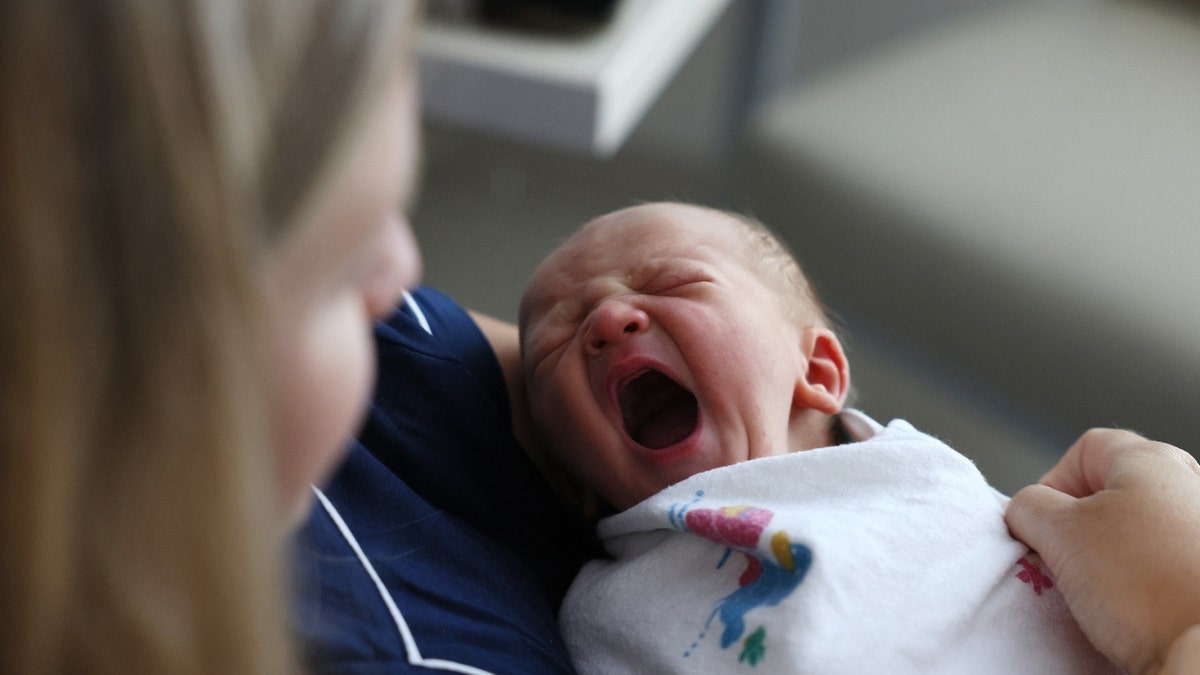Voters don’t want the GOP to ‘go after abortion rights’: Jim Messina
Obama-Biden 2012 campaign manager Jim Messina tells ‘America’s Newsroom’ that Republicans lose local elections when they try to fight abortion rights.
Since the Supreme Court overturned Roe v. Wade in June 2022, at least 30,000 babies have been born that would have otherwise been aborted, according to a new study published this month.
The 32,000 babies were born in states that enacted some form of abortion restriction, according to the study conducted by the Institute of Labor Economics that looked at the effects of the U.S. Supreme Court decision in Dobbs v. Jackson Women’s Health Organization, which returned the issue of abortion to the states.
"Our primary analysis indicates that in the first six months of 2023, births rose by an average of 2.3 percent in states enforcing total abortion bans compared to a control group of states where abortion rights remained protected, amounting to approximately 32,000 additional annual births resulting from abortion bans," according to the study.

A baby in hospital. (Getty Images)
The trio of researchers who conducted the study said the shift represented the "most profound transformation of the landscape of U.S. abortion access in 50 years," based on preliminary births data from the US Centers for Disease Control and Prevention (CDC).
‘ABORTION IS OK’ HIGHWAY BILLBOARDS ANGER SURVIVORS: ‘ABSOLUTELY HEARTBREAKING’
"As of November 1, 2023, 14 states are enforcing bans on abortion in nearly all circumstances, and 23 percent of U.S. women of reproductive age have experienced an increase in driving distance to the nearest abortion facility, from an average of 43 miles one-way before Dobbs to 330 miles at present," the study found.
But, Kristan Hawkins, the president of Students for Life of America, told the New York Times that the research indicated a "triumph that pro-life policies result in lives saved."
"The insinuation of a lot of coverage of such data points is that it’s a bad thing for there to be more children welcomed in states with better laws than in states that fast-track abortion," she said.
NEBRASKA COALITION PRESS TO INCLUDE ABORTION RIGHTS IN STATE CONSTITUTION
Alison Gemmill, an assistant professor at the Johns Hopkins Bloomberg School of Public Health, in contrast, told CNN that the new numbers indicated "an assault on reproductive autonomy."
"We don’t always detect signals in these population aggregates because there’s a lot of variation when you group everybody together," she said. "The fact that there is a signal at the population level means that something’s really going on. It’s pretty strong evidence," because fertility rates, or the number of births per women of reproductive age, don’t typically change dramatically.
The authors of the study argued that evidence suggests "diminished abortion access poses a risk to the health and financial stability of this vulnerable population."

A newborn baby boy yawns as he sits with his mother at Emerson Hospital. ((Photo by Jessica Rinaldi/The Boston Globe via Getty Images))
"In 2020, approximately 1 in 5 pregnancies ended in abortion," the study said. "At the time they seek abortions, 75 percent of patients are low-income, 59 percent have previously given birth, and 55 percent report a recent disruptive life event such as falling behind on the rent or losing a job."
The findings provided a detailed look at the implications of the Supreme Court’s landmark decision last year.
The effects on abortion were "especially large" for Hispanic women and women ages 20 to 24 with results indicating that birth rates increased by an average 4.7% and 3.3% respectively. In addition, based on the geography of abortion restrictions that made interstate travel more costly, the percentages went up 4.4% in Mississippi and 5.1% in Texas.
